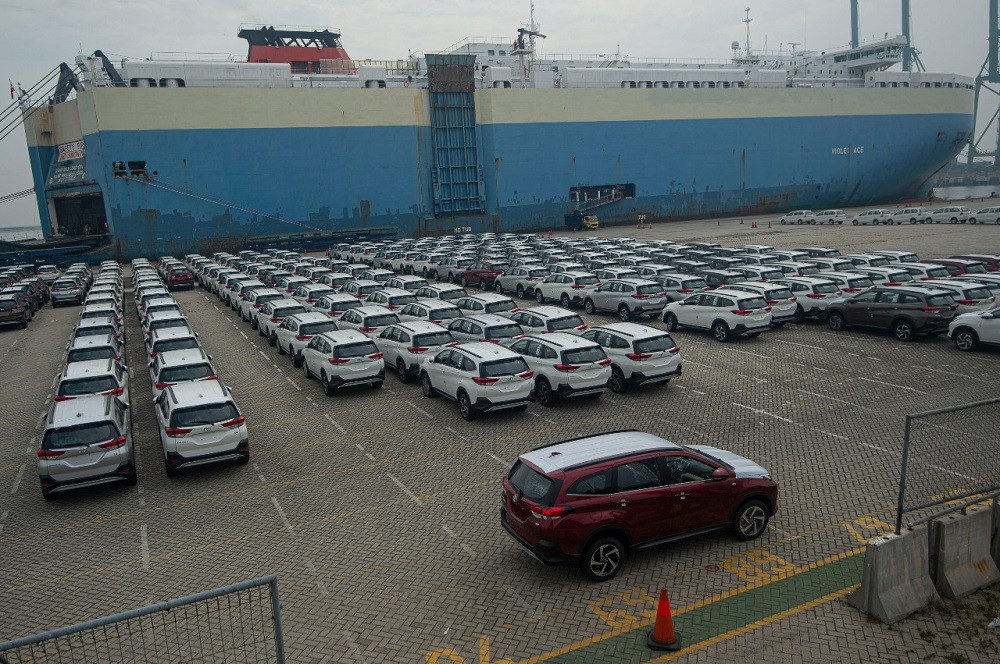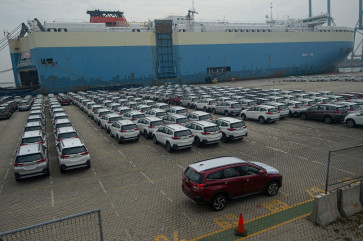Popular Reads
Top Results
Can't find what you're looking for?
View all search resultsPopular Reads
Top Results
Can't find what you're looking for?
View all search resultsIndonesia's new economic status: Challenges for exports
Despite the benefits that the improved rating will bring, it might also pose new challenges for Indonesia that need to be anticipated. One of these is related to the eligibility for trade remedy instruments.
Change text size
Gift Premium Articles
to Anyone
 Set for shipment: Multipurpose vehicles are parked at Tanjung Priok Port’s car terminal prior to being exported on April 8. Association of Indonesian Automotive Manufacturers (Gaikindo) data shows that Indonesia exported 104,158 built-up cars in the first semester of this year. (Antara/Aditya Pradana Putra)
Set for shipment: Multipurpose vehicles are parked at Tanjung Priok Port’s car terminal prior to being exported on April 8. Association of Indonesian Automotive Manufacturers (Gaikindo) data shows that Indonesia exported 104,158 built-up cars in the first semester of this year. (Antara/Aditya Pradana Putra)
I
ndonesia celebrates its 75th anniversary of independence with a new economic status. Earlier last month, the World Bank raised Indonesia’s status from that of a lower-middle-income economy to that of an upper-middle-income economy.
Indonesia has now officially joined other big economies like China, Brazil, South Africa, Turkey, Malaysia and Thailand. With this new status, Indonesia is one step closer to becoming a high-income country, the highest level of economic status according to World Bank’s classification.
The World Bank uses this classification as a factor to determine a country’s eligibility to use the Bank’s facilities, including loan pricing. The upgraded status is also expected to improve the investment climate, boost trade and enhance economic the competitiveness of the country.
Despite the benefits that the improved rating will bring, it might also pose new challenges for Indonesia that need to be anticipated. One of these is related to the eligibility for trade remedy instruments.
Trade remedies are exceptions to the World Trade Organization’s free-trade principles. These remedies are divided broadly into antidumping measures, antisubsidy measures and safeguard measures. Each of them is triggered in response to different circumstances and requires specific conditions for a government to take remedial action against imports that are causing injury to a domestic industry.
However, WTO rules provide special and differential treatment (S&DT) provisions for developing countries, in particular on antisubsidy and safeguard measures. These provisions are crucial for a developing country to be excluded from antisubsidy and safeguard measures taken by other countries.
First, the WTO Agreement on Subsidies and Countervailing Measures, which regulates the use of antisubsidy measures, sets higher standards for determining the de minimis subsidy level for developing countries, namely 2 percent, whereas the de minimis subsidy level for developed countries is 1 percent. In other words, an investigating authority has to find a minimum level of subsidies of 2 percent instead of 1 percent, as one of the requirements for imposing an antisubsidy duty on products imported from developing countries.

















